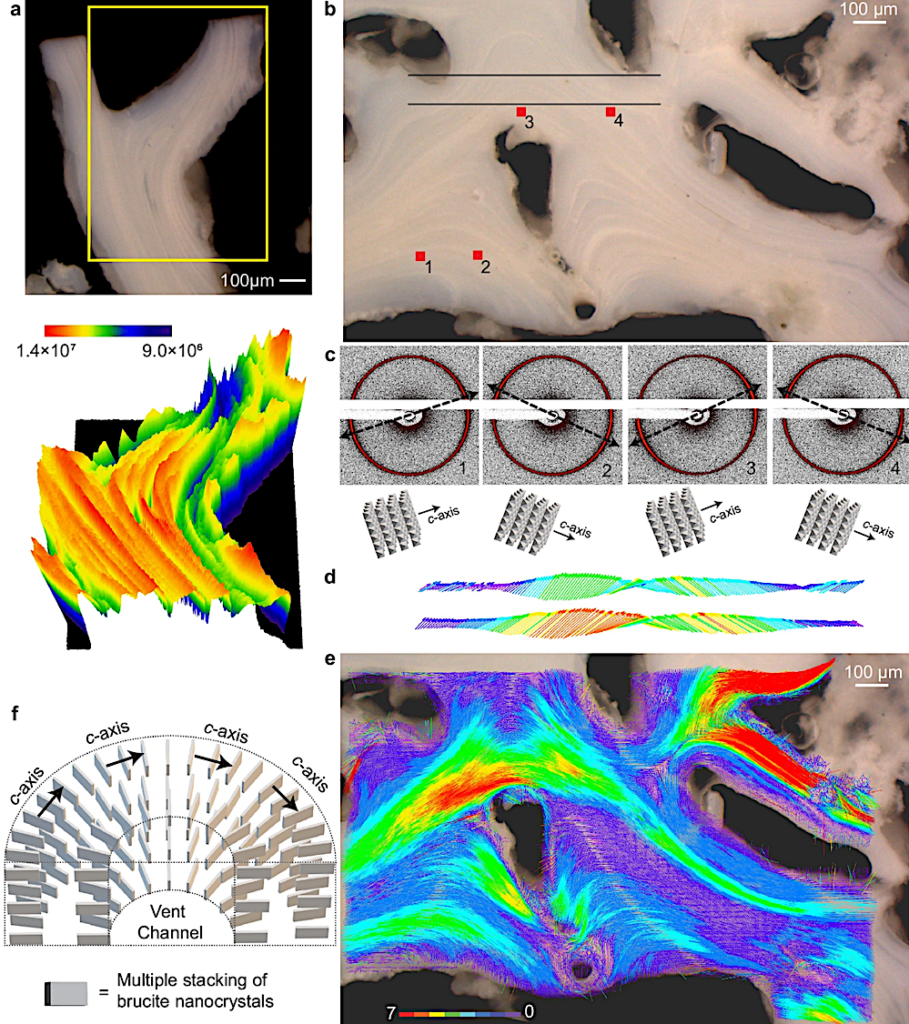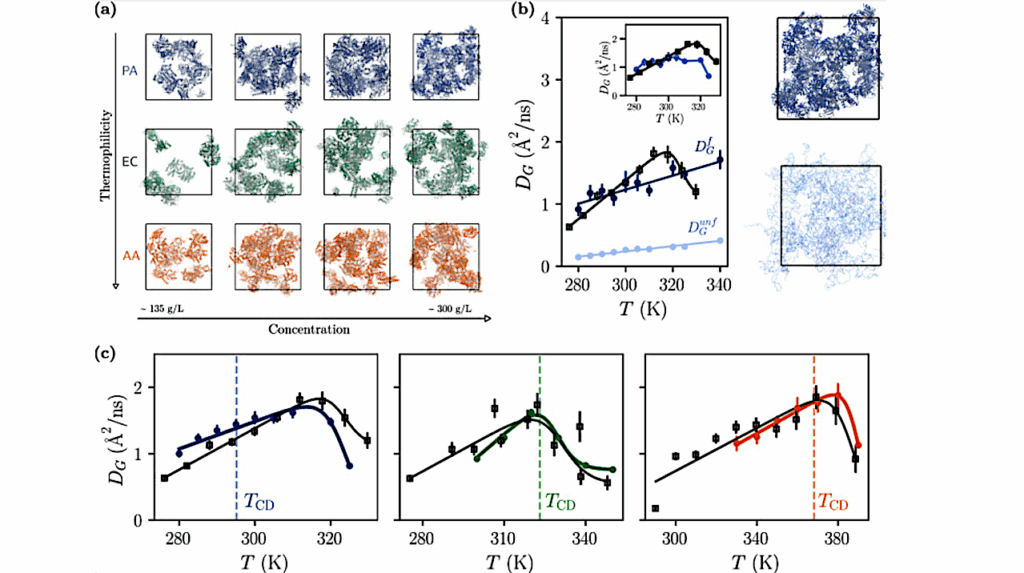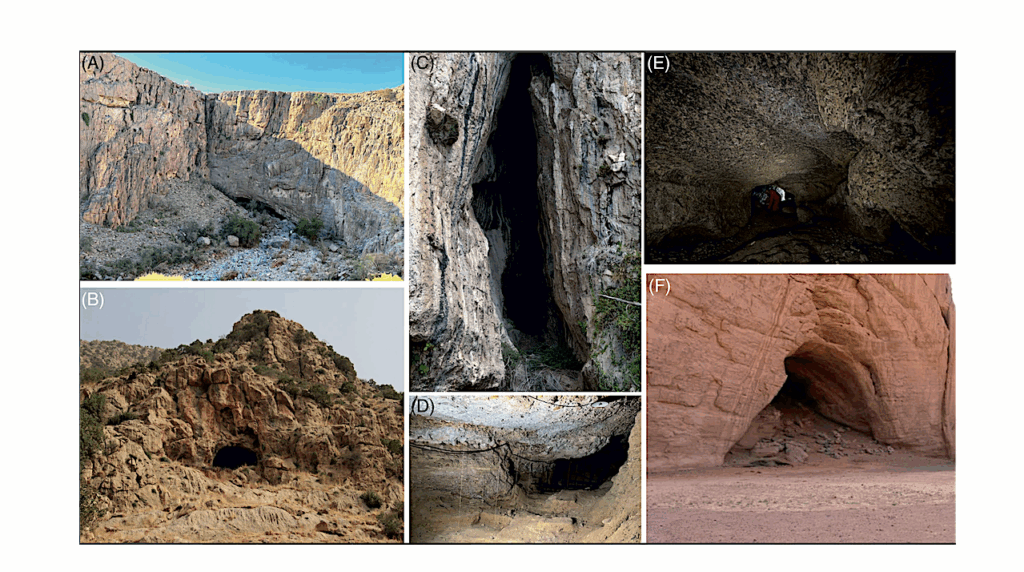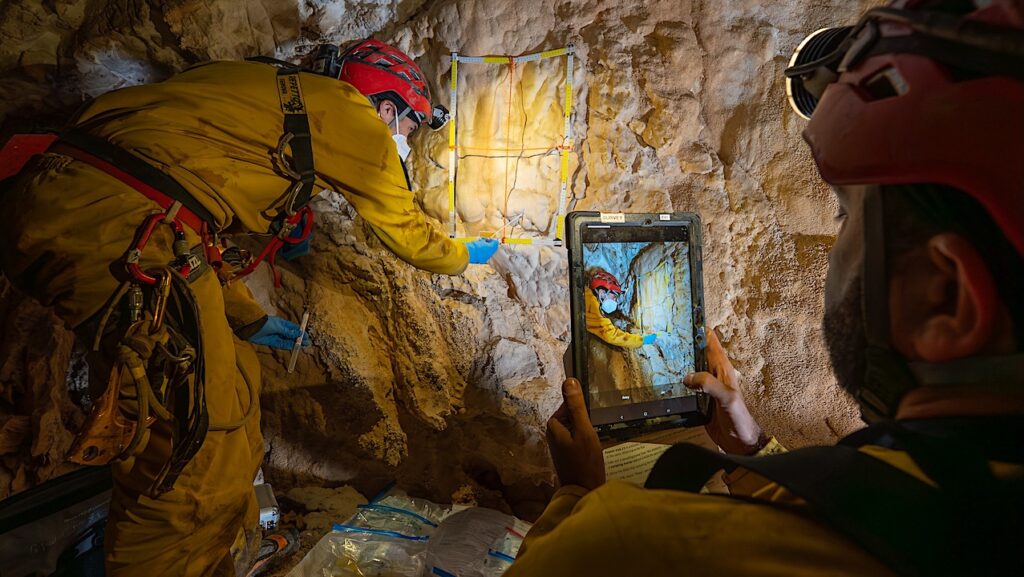Osmotic Energy Conversion Discovered in Hydrothermal Vents Provides Clues to Life’s Beginnings

Researchers experimentally demonstrated that hydrothermal vent precipitates, located deep in the ocean, contains aligned nanopores that enable selective ion transport, thus facilitating osmotic energy conversion from ion gradients. A key finding is that selective ion transport, typically associated with biological cell membranes, can occur through naturally formed inorganic nanostructures in geochemical settings.
This discovery offers new insights into how life-sustaining energy harvesting processes can arise abiotically from long-lasting chemical disequilibria in deep-sea hydrothermal vents. Additionally, it highlights potential strategies for developing blue energy technologies utilising salinity gradients.
In the deep sea, where sunlight cannot reach, massive structures known as hydrothermal vents (HVs) rise from the ocean floor. These chimney-like structures continuously release hot water containing various metal ions into the cold seawater, gradually growing over time, sometimes reaching heights of up to 60 meters. These vents also support a unique ecosystem distinct from that on the Earth’s surface.

A deep-sea hydrothermal vent with aligned nanopores enabling selective ion transport and ion gradient energy conversion. Credit: Reproduced from Lee et al., Nat. Commun. 2024
In recent years, similar structures have been discovered not only on Earth but also on ice-covered celestial bodies like Saturn’s moon Enceladus. Since HVs may exist on ancient Earth before life emerged, researchers believe they may have played a crucial role as “natural chemical synthesis systems,” potentially contributing to the origin of life on Earth.
An international team led by researchers from the Earth-Life Science Institute (ELSI) and RIKEN Center for Sustainable Resource Science studied HV samples collected from the “Shinkai Seep Field,” located on the northwestern slope of the Mariana Trench, one of the deepest trenches on Earth, at a depth of approximately 5,700 meters. Alkaline hot water generated from the reaction between olivine and water forms white smoker-type HVs primarily composed of a mineral called brucite, which has a plate-like structure (Figure 2a).
Microscopic observations of the collected samples revealed that small plate-like crystals, approximately 100 nanometers in size, assembled to form a thick membrane, creating a pathway for hot vent water and seawater (Figure 2b). These membranes exhibited periodic stripe patterns, originating from the stacked multiple layers, and grew to a thickness of 200 to 400 micrometers (Figures 2c, d, e).

a Photograph of HV precipitates collected from the Shinkai Seep Field. b, c Cross-polarized optical microscope images of vertical (b) and horizontal slices of HV (cross-section, c). In the horizontal slice image, vent fluid channels and periodic line patterns in the HV wall are indicated as yellow asterisks and red arrows, respectively. d–g SEM images of a naturally cleaved HV fragment. d, e Inorganic walls with different cleavage directions. The walls show stratified structures, with the layers following the shape of the wall. f Magnification of the wall (boxed area in e) revealing a sublayer structure with consolidated features. g Sublayer structures in different locations of walls. Sublayers 2 to 5-µm thick (yellow square brackets) constituted the wall and exhibited a uniaxial texture. The uniaxial features result from the array of multiple nanocrystals shown in the inset. h TEM image of the crystals constituting the sublayers. i HAADF-STEM image of the crystal with nanopores visible inside. — Nat. Commun. 2024
The researchers conducted synchrotron X-ray diffraction experiments to investigate the structure of the mineral membranes in detail. Multiple regions of the sample were scanned with X-rays, and the directions with the strongest diffraction intensity were indicated with arrows (Figure 3a). In this figure, the alignment direction of the brucite crystals is colour-coded. Remarkably, throughout the scanned sample, the plate-like brucite nanocrystals were found to be orderly and continuously arranged, radiating outward from the vent fluid channel to the seawater (Figure 3b). This arrangement confirmed that nanopore structures suitable for ion transport were formed throughout the entire sample, which has a height of 80 cm.

a An optical image of an HV slice (above) and its corresponding 3D map of scattering intensity (below). In the 3D intensity map, the scattering intensity at individual scanning points was integrated and converted into single values. b–e WAXS analysis on the HV wall sample. b Optical image of the scanning area. c Selected brucite 001 diffraction patterns at multiple points (red squares in b). Black double-headed arrows show the preferred orientation direction of the brucite (001) plane. Schematic images showing the preferred orientation of the brucite layers are shown below the diffraction patterns. The crystal structure of brucite consists of an edge-shared MgO6 layer in the (001) plane and a layered hydroxide stack along the c-axis. d Vector plots showing the direction and intensity of the preferred orientation of the (001) plane. The diffraction patterns at two different locations (line scans) were analyzed and plotted. The black lines in (b) show the location of the line scan. The color and length of the vectors represent the value of the highest scattering intensity of the asymmetric ring. The direction of the vector indicates the orientation of the strongest intensity axis of the asymmetric ring and shows the preferred orientation direction. e 2D map of the vector plot overlayed on the optical image shown in (b). f Schematic of the brucite (001) plane arrangement around the channel based on the WAXS/SAXS scanning and POM analysis. The corresponding c-axis of brucite is also shown. — Nat. Commun. 2024
To validate this hypothesis, they immersed the samples in environments with varying concentrations of ions such as sodium and potassium present in seawater, examining ion transport (Figure 4a). The results showed that the surface charges of the nanopores allowed the entire HV structure to function as a selective ion transport material, converting differences in concentrations of sodium ions, potassium ions, chloride ions, and hydrogen ions into electrical energy (Figure 4b). This suggests that natural HVs may function as osmotic power generation systems, selectively transporting diverse ions from seawater to generate electrical energy.
All living beings generate energy by leveraging ion concentration differences within their cells. Therefore, the question of how life began to utilise this mechanism is a crucial in the origins of life. The results of this study demonstrate that energy conversion utilizing ions essential for life can occur naturally through geological processes.
Concentration differences of ions are widely observed in nature, and similar phenomena may have taken place on ancient Earth before the emergence of life. Additionally, recent research has confirmed hydrothermal activity on ice-covered celestial bodies. In the future, samples from these celestial bodies may be brought back to Earth for detailed analysis, potentially revealing similar structures and energy generation phenomena.
Osmotic energy conversion in serpentinite-hosted deep-sea hydrothermal vents, Nature (open access)
Astrobiology,








